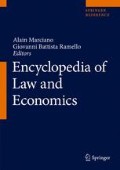Abstract
Economic growth is a long-run process that occurs when an economy’s potential output increases, and it can be measured by the product method, the income approach or the expenditure method. Actual growth is the percentage annual increase in national output. Potential growth is the speed at which the economy could grow, i.e. the percentage annual increase in the economy’s capacity to produce and it can be shown by an outward shift in the economy’s production possibility frontier. The theory and empirical studies suggest that potential economic growth is associated with the increase in the use of factors of production (capital, labor, energy, etc), but primarily to increases in productivity or efficiency with which these factors are used, through advances in labor skills and organization of production or improves in technology. Productivity and economic growth are then closely linked because economic growth occurs when productivity increases to allow for such growth. Productivity is therefore the cornerstone of economic growth.
Productivity is an indicator of the efficiency of production and can be defined as the ratio of output to inputs in production. Higher productivity means that the economy can produce more goods and services at a lower cost per unit. This will help to reduce prices and increase consumer welfare and living standards, because more real income improves people’s ability to purchase goods and services, enjoy leisure, improve housing and education and contribute to social and environmental programs. Higher productivity increase total output from the scarce factor resources, causing an outward shift of the production possibility frontier. Productivity also affects our competitive position: the more productive we are the better we are able to compete on world markets. Productivity growth also helps businesses to be more profitable. There are broadly two ways of measuring productivity. On one side are the partial productivity measurements that relate to an input (labor, capital, etc), and on the other side it is a measure of total factor productivity (TFP) or multifactor productivity (MFP), which measures the effects in total output not caused by measured inputs of labor, capital and intermediate outputs.
Access this chapter
Tax calculation will be finalised at checkout
Purchases are for personal use only
References
Helpman E (2004) The mystery of economic growth. The Belknap Press of Harvard University Press, Cambridge, MA
Krugman P (1991) Increasing returns and economic geography. J Polit Econ 99:183–199
Lucas R (1988) On the mechanics of economic development. J Monet Econ 22:3–42
Myrdal G (1957) Economic theory and underdeveloped regions. Hutchinson Publications, London
North DC (1990) Institutions, institutional change, and economic performance. Cambridge University Press, New York
Romer P (1986) Increasing returns and long run growth. J Polit Econ 94(2):1002–1037
Romer P (1990) Endogenous technological change. J Polit Econ 98(5):S71–S102
Solow RM (1956) A contribution to the theory of economic growth. Q J Econ 70(1):65–94
Author information
Authors and Affiliations
Corresponding author
Editor information
Editors and Affiliations
Rights and permissions
Copyright information
© 2019 Springer Science+Business Media, LLC, part of Springer Nature
About this entry
Cite this entry
Vallés-Giménez, J., Zárate-Marco, A. (2019). Productivity and Growth. In: Marciano, A., Ramello, G.B. (eds) Encyclopedia of Law and Economics. Springer, New York, NY. https://doi.org/10.1007/978-1-4614-7753-2_384
Download citation
DOI: https://doi.org/10.1007/978-1-4614-7753-2_384
Published:
Publisher Name: Springer, New York, NY
Print ISBN: 978-1-4614-7752-5
Online ISBN: 978-1-4614-7753-2
eBook Packages: Economics and FinanceReference Module Humanities and Social SciencesReference Module Business, Economics and Social Sciences

